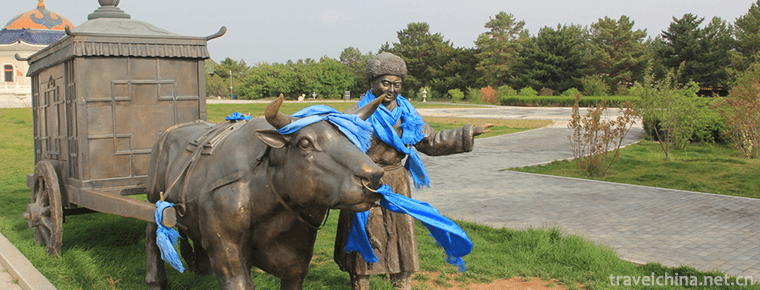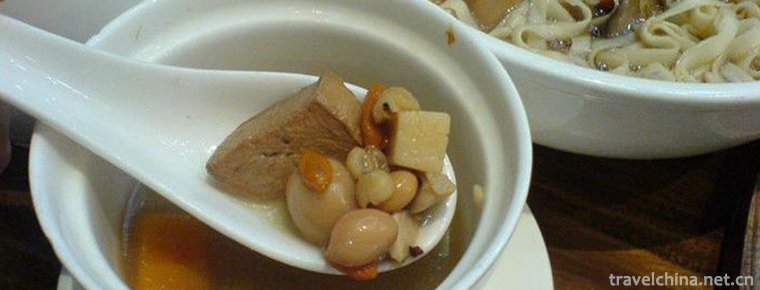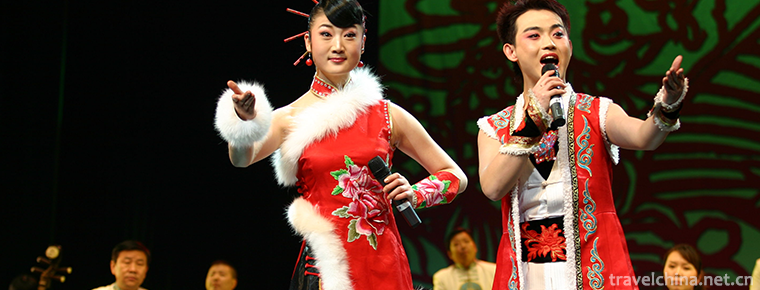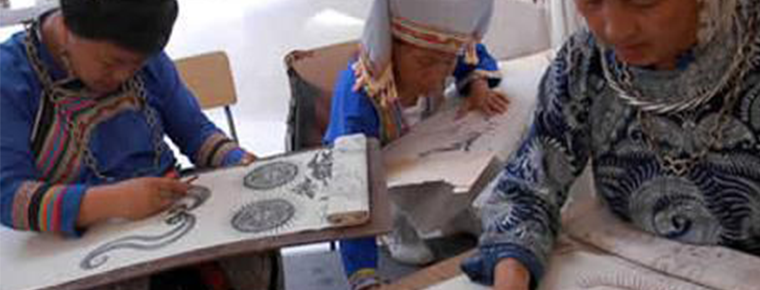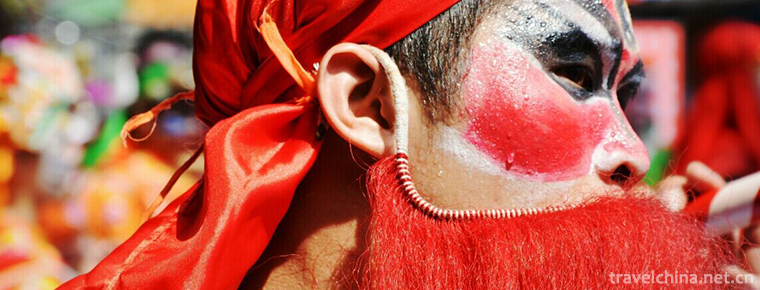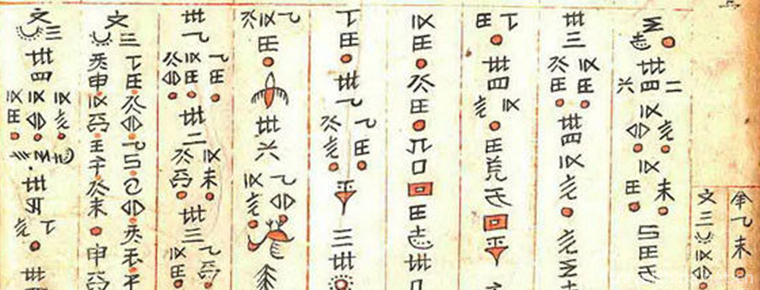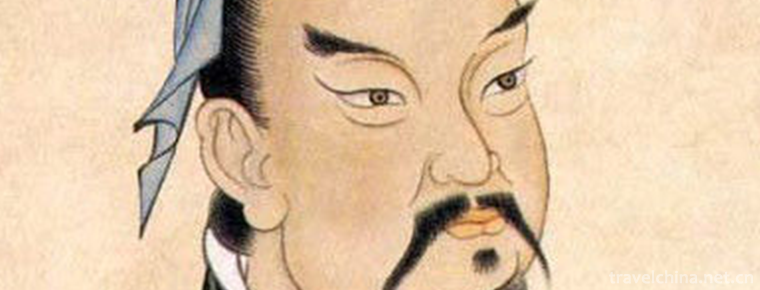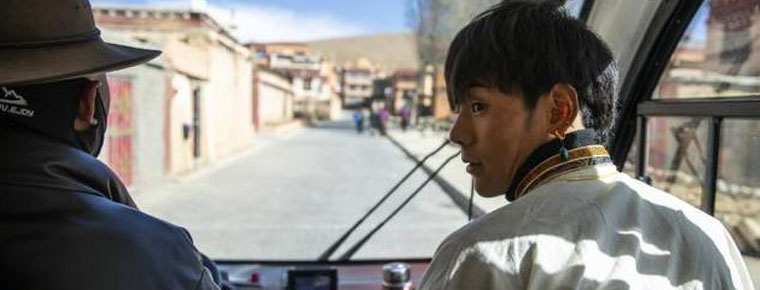Hangzhou Reviews
Hangzhou Reviews
Hangzhou commentary originated from the Southern Song Dynasty, and has a history of 800 years. It is the most characteristic local traditional folk art in Hangzhou, Zhejiang Province. It has been listed in the provincial and municipal intangible cultural heritage. Many Hangzhou residents grew up listening to Hangzhou commentary.
After careful preparation, the veteran artists of Hangzhou Literary Lianqu Zaju Association's commentary Art Troupe selected some excellent programs in the long commentary such as "Water Margin", "Three Kingdoms", "Eight Rights of Ming and Qing Dynasties", "Gu Dingchen" and so on, so that the citizens can enter the wonderful "commentary world" while they are cool.
In June 2008, the Hangzhou Commentary declared by Hangzhou City, Zhejiang Province, was approved by the State Council to be included in the second batch of national intangible cultural heritage lists.
historical origin
Hangzhou commentary is one of the famous traditional folk songs in Zhejiang Province. It is a form of folk art that uses popular language to comment on history. It was formed and prevailed in the mid-Qing Dynasty. But as far as its origin is concerned, it can be traced back to the Southern Song Dynasty. Wu Zimu, a native of Qiantang in the Southern Song Dynasty, wrote in "Dream Lianglu": "Historiographers refer to"Tongjian"and Historical Biographies of the Han and Tang dynasties, as well as the battles between prosperity and abolition. They include Dai Shusheng, Zhou Jinshi, Zhang Xiaoniang, Song Xiaoniang, Qiu Qishan, Xu Xu Xuanxue and so on. Six other doctors, Wang Liufu, had given speeches in front of the imperial court. They were invited to give speeches for the curators, who were well versed in all history. "It is said that Dr. Wang Liufu was the first person to tell the story of Yue Fei to Song Xiaozong. Therefore, the commentary artist recognized him as the earliest author of Yue Zhuan. After the mid-Qing Dynasty, Hangzhou's commentary had a great development. It was called "Hangzhou's four major types of music" together with "Hangzhou Opera", "Hangzhou Tanhuang" and "Hangzhou's commentary". During the Guangxu period, there were more than 200 artists in Hangzhou. In the early years of the Republic of China, some guilds organized "commentary societies", once occupied the main bookstores and tea houses in Hangzhou, which had a great influence.
At the beginning of the Republic of China, Su Yingzhou, a well-known Hangzhou commentary artist, established the "commentary Wengu Society" on the basis of the "commentary society", and elected Wang Chunyong as its president with more than 100 members. At that time, famous Hangzhou commentators such as Chen Jianchun, Wang Chunfeng, Tong Zixiang, Chen Junfang, Chen Jianchun and Li Weiqing, Yin Baolin, developed Cai Yongjia's tradition and formed the artistic characteristics of Hangzhou commentary, which mainly focused on comment, comment and performance.
At the end of the Qing Dynasty, Hangzhou commentary artists regarded Shuo Dashu as a "Muduo legacy". According to Li Weiqing, a famous actor in Hangzhou commentary, he once saw a stone tablet commemorating the commentary office several times in 1954. He wrote "Muduo legacy" in four characters, which was signed as Wang Chunqiao, a student of the State. The time of inscription was about in the Qingdaoguang period. "Muduo" is a wooden bell, which is used as a metaphor for the propagandist of enlightenment. Hangzhou commentary artists regard storytelling as a relic of Muduo and a lofty profession to propagate and educate people. Otherwise, such cultural people as Wang Chunqiao will not participate in the industry of storytelling. Storytelling artists are widely respected by people because they are usually strict in their role as teachers. According to the old artist's recollection, the masses often comment on human rights and wrongs with what the storyteller said, or "invite the old Muduo to come out and comment on the truth". At that time, the storytellers were welcomed by the masses everywhere. "No firewood and rice for thousands of miles, no light and oil for lighting." It is better to give a notice than a sentence from Mr. Dashu. In addition, in the Qing Dynasty, Hangzhou Prefecture took the storyteller as a person who advocated enlightenment and gave him love. According to Li Weiqing and others, they had seen a notice from the Hangzhou government during the Qingdaoguang period to the effect that no disturbance could affect the bookstore. If someone disturbed the bookstore, they ordered the landlord to take charge of arresting the troublemaker and shutting him up in the class room. Hangzhou critics dare to criticize current events. For example, when Chen Junfang was in Hangzhou before liberation, he improvised the famous poem "Outside the Castle Peak Tower outside the mountain" to read: "Outside the mountain, the mountain is sad, when the West Lake commits suicide, the rising wind makes the visitors thin, so Hangzhou is only a Hangzhou." He was welcomed by the audience, but was subpoenaed by the Kuomintang provincial Party headquarters. As Hangzhou's commentary artists have long taken Gaotai's education as their aim, their bibliographic connotation is relatively rich (artists call it "meat"). Generally speaking, its traditional style of storytelling is more serious. Instead of entertaining the audience with gimmicks, it mainly relies on language art, proper performances and combined comments, as well as inserting some folklore related to Hangzhou, in order to shape characters and attract the audience. Cai Yongjia did not attract audiences with her clothes and fame. She was appreciated by the audiences by her artistic expression.
Chen Jianchun, one of the "three tripartite armours", emphasizes that storytelling should be done in six ways: first, to be familiar with the way and nature of books, and to work hard on the word "thorough". Second, we should analyze the calligraphy and make sure that we have a thorough understanding of it. Only in this way can we not "open the edge". Third, we should arrange the "relationship" to avoid similarities. If Erqi Zhou Yu is mainly expressed in the first person, while Sanqi Zhou Yu is mainly expressed in the third person, it will not be repeated. (4) To sell enough "Guanzi", such as Zhao Zilong falling into the pit, the general artist said that the end, but he had to say that Zhao Zilong jumped out of the pit until. Why don't Cao Bing shoot Zilong with arrows? Cao Cao said that we should live the dragon and not die Zhao Yun, so Zhao Zilong can jump out of the pit smoothly. Then why did Cao Cao say that? And listen to tomorrow's decomposition. Chen Jianchun called such a pass a "sell-foot pass". (5) Make every effort to please. After sorting out the book, slowly comment, that is, the so-called "one statement, two tables and three accounts". And with "mountain fu", "city fu", "street scene fu", "knife fu", "gun fu", "hammer fu", "battlefield fu" and so on, "praise", describe the scenery, render the atmosphere, foil the characters. Speaking of the "number of mouths" at the end of each paragraph, we will speak with cleverness, like a sharp knife splitting bamboo, at one go. (5) Strengths should be strengthened and weaknesses avoided. Storytelling should be based on speaking and commenting, not acting, not acting, so long as the performance in the storytelling reaches the point, it can not be excessive. If your gimmicks, oral skills and local dialects are not good, don't let go, avoid your shortcomings and try to bring your own strengths into full play. Chen Jianchun's storytelling experience was inherited by his proud disciple Chen Junfang and others.
During the Anti-Japanese War, Hangzhou commentary began to decline and artists scattered. In order to communicate with each other, artists set up the Hangzhou Commentary "Friendship Club". After the victory of the War of Resistance Against Japan, the old name of Wengushe was changed to Jiang Youlin, Chen Junfang and other presidents. After liberation, Hangzhou Quyi Troupe was established, and Wengu Society was merged. Yu Xiaofei and Li Weiqing were the leaders of the troupe. In addition to the traditional bibliography of speeches, many artists actively create and transplant modern bibliography. For example, Li Weiqing's "Air Force Hero Zhang Jihui", An Zhongwen's "Songhu Guerrilla Team", Chen Junfang's "Long March of the Red Army", Bao Yingzhou's "Wild Fire Spring Wind Fighting the Ancient City", Li Baoyuan's "Lin Haixueyuan" and so on, all received good reviews from the audience. During the 10 years of the "Cultural Revolution", Hangzhou's commentary was severely damaged. However, Malay, a rising star, tried to actively create and tell new commentary stories, such as Premier Zhou's Coming to the Outer Building, which was welcomed by the audience.
artistic characteristics
Hangzhou commentary has its unique artistic charm. It uses the local dialect of Hangzhou to perform, comment on history, tell stories, close to the people, close to life, rich in local characteristics of Hangzhou, is one of the best copies of Hangzhou's secular customs. It pays attention to the combination of mouth, eye, body, law, footwork and spirit. It can only use one person, one table, one fan and one wake-up wood. Although the performance form is very simple, the description is subtle, the rendering is good, and the audience's heartstrings are closely tied. It can meet the audience's entertainment requirements to the greatest extent. Hangzhou Culture, Radio, Television, Press and Publishing Bureau organized Hangzhou Talk Critics Artists and related experts to salvage the representative Hangzhou Talks handed down from past dynasties, and published a series of Hangzhou Talks Criticism composed of 10 classical remarks, including: Han Xin Legend, Song Jiang, Yue Fei Biography, Zhongan Qiao, Liu Bowen's Mountains Exit, Shuangxiong Legend, Taiping Mun Chronicle. Qianlong went down to the south of the Yangtze River, Mo Wennu's home, and Songhu guerrillas.
Major repertoire
Traditional bibliographies can be divided into three categories: one is "Long Reliance Books", such as "Romance of Fengshen", "Eastern and Western Han Dynasty", "Three Kingdoms", "Sui and Tang Dynasties", "General Yang Jia". One is "short-typed books", such as "Water Margin", "Jintai Biography", "Seven Chivalrous Five Righteousness" and so on; the other is "official books", such as "Baogong Case", "Haigong Case", "Peng Gong Case" and "Shigong Case". After the founding of the People's Republic of China, more than ten new books such as Lin Hai Xueyuan, Railway Guerrilla and Wild Fire Spring and Wind Fighting Ancient City were transplanted and created.
The main content of Hangzhou's commentary is historical stories, fairies and monsters, chivalrous justice cases. The repertoire is divided into "Long Reliance", "Short Reliance", "Swordsman Book" and so on. There are more than forty books such as Eastern Han Dynasty, Three Kingdoms, Daming Heroes and Yue Zhuan. In short, they are official documents, such as Baogong Case, Shigong Case and Peng Gong Case. Swordsman books include "Seven Swordsmen and Five Righteousness", "Small Five Righteousness", "Seven Swordsmen and Thirteen Swordsmen". Famous artists have their own bibliographies and handouts. For example, Xie Wanchun's Eastern Han Dynasty, a famous artist in the late Qing Dynasty, was handed down successively to Feng Ruihua, Ren Dongxiang and Ren Zhaolin. Since the end of the Qing Dynasty and the beginning of the Republic of China, Jin Hongyun and Yin Baolin, known as the "Five Clouds of the Wang School", have been good at talking about the Western Han Dynasty. Yin later passed this book on to Li Weiqing. The two commentaries of the Eastern and Western Han Dynasties were formerly collectively called "Han Shu". In "Xihu Tourist Zhiyu", there were records of "Han Shu" in Washe Gou Ban of Hangzhou in the Southern Song Dynasty. The Eastern Han Dynasty is now Li Zixin's masterpiece bibliography; the Western Han Dynasty, which Li Weiqing sorted out in 1986, is called "Han Xin Zhuan". As early as the Southern Song Dynasty, Dr. Wang Liuzhong, a historical artist in Hangzhou, compiled the stories of Yuefei, Han Shizhong and others who happened in this dynasty into new words. According to Dream Liang Lu, "There are also six doctors Wang, who originally spoke before the imperial court." In Xianchun years, the performances of "Fuhua Pian" and "The Biography of Zhongxing Celebrities" were performed, and many listeners said that the words were really good and the sources of the questions were very wide. Since the end of the Qing Dynasty and the beginning of the Republic of China, "Yue Zhuan" has been well described by Wang Chunqiao, Wang Shaozhang, Wang Chunyong, Li Baoyuan, Li Weiqing, Chen Junfang and others. In addition, Su Yingzhou's Peng Gong Case, Tong Zixiang's Seven Chivalrous and Five Justices, Qin Shaoyun's Water Margin, Hu Wenxiong's Sui and Tang Dynasties, and the traditional Hangzhou commentary "Yang Jia Jiang", "Ji Gong Zhuan", "Journey to the West", "Flying Dragon Biography", "Jintai Zhuan", "Ying Martyrs", "Eight Justices of Ming and Qing Dynasties", "Haigong Case" were successively renowned in Hangzhou around the 1930s. Commentary artists Li Baohua, Jiang Youlin, Li Baoyuan, Li Weiqing, Chen Junfang, Guo Junming, Hu Zhengming, Mao Saiyun, Zhang Guifang, Bao Yingzhou, Zhu Yunlong, Zhang Yifei, Wang Yongqing, Hua Yongkui, Xu Zailin, Mao Wenkui and others succeeded. They have been scattered in many teahouses in Hangzhou for many years, so that the citizens and children who listen to books learn a lot of historical and literary knowledge from them. In order to promote the development of the art of storytelling, in 1930, Hangzhou World held a one-month exchange performance of Hangzhou and Suzhou.
Inheritance significance
Commentary, Hangzhou people called "big book", in the Southern Song Dynasty, it was called "talk" (meaning telling stories). Speech in the Song Dynasty has an impact on the art of storytelling, drama and vernacular fiction of later generations. The existing version of the History-telling Plain Tales is mostly processed and developed from the old version of the Song Dynasty. For example, the stories of Da Tang Sanzang Jing Shi Hua printed by Zhang Jia Shupu in Zhongwazi, Hangzhou, have already taken the embryonic form of the present version of Journey to the West; The Three Towers of West Lake has provided the blueprint for the later generation's Biography of White Snake; The Xuanhe Heritage of the Great Song Dynasty has provided the outline of the story for the later Water Margin. These stories became the subject of later operas. The storyteller's skills of interrogating, self-reporting and describing war scenes were also absorbed by opera artists.
The Qing Dynasty was another peak period of the development of Hangzhou's commentary. Li Tiaoyuan, a scholar in the reign of Qianlong, once wrote a poem describing Nan : "Silver Character Tieqian Eloquence Society, four golden drums compete for power." To know the rise and fall of the ancient and modern hatred, only in the three sound awakening wood (see "Tongshan Poetry Collection" Volume 38, "Langpu Baiyong" the twelfth "Commentary". In the thirteenth year of Daoguang (1833), artists set up the Hangzhou "Commentary Society" with Wang Chunqiao as its president. At the beginning, there was a temple of Jueyuan in Fengle Bridge, a temple of Tang Hou in Yongning Court in Lane of Qianpi City and a Bing Teahouse in Lane of Qianpi City. Famous artists include Wang Chunqiao, Xie Wanchun, Cai Yongjia, Shenpu Bao, Qin Xiaoyun, Ai Fengchun, Ma Ruihua, Jiang Hongtang, Pan Wenguang, Hu Wenxiong and so on. They have formed the "Xie School" headed by Xie Wanchun and the "Wang School" headed by Wang Chunqiao. Later, Cai Yongjia, who inherited the specialties of "Wang School" with "Shuo Biao" as the main performance and "Xie School", became famous in Hangzhou for her own family.
Art depends on inheritance. Although there are many stories of Hangzhou stories in the collection of Mowennu's Home, after all, the book can only embody the words, but it can not reproduce the vividness of the performance. "Hangzhou Commentary" has always been handed down orally in order to preserve its original flavor and present it vividly to the audience. Wang Baoshan is also an old actor. He is very conscious. In order to leave some sound information for Hangzhou Commentary, he bought a computer, a video camera and a video recorder. He videotaped himself during the performance and then disc. "In a few decades, I'll be gone, but I don't want Hangzhou Commentary to follow me. These are the only things I can do now." The old man's words were simple and touching. But such a record, after all, is limited only by one person's strength, but also can not fully display the art of commentary. Several other veteran artists expressed their worries to the reporters: "We all want to pass on this craft, so that future generations can pass on from generation to generation. After all, this is the culture left by the old ancestors. It would be a pity if it came to our place and ended!
"Hangzhou commentary is like a flower, which needs sunshine from time to time, fertilization and irrigation. Flowers with no vitality of sunshine, rain and dew will wither." Yao Zhanxiang used this metaphor to express his feelings. He said that it is very gratifying to see that the "Lotus Fall" and "Xiao Luo Shu" have been understood and accepted by everyone as a folk artist. But with the same folk art, "Hangzhou commentary" is quite different from the former two, which makes him very uncomfortable. He hoped that through our appeal to the society to pay attention to the "Hangzhou Commentary" and that the people who had the heart could open up some fixed performance venues for the "Hangzhou Commentary" so as to make their skills useful. "We just want a stage!" This is the heartfelt call of the old people.
Inheritance status
Chaohui Park, Hangzhou Xiacheng District, sunshine and warmth, weeping willows Yiyi, Hangzhou's highest standard celebrity commentary show is held here. Seven celebrities perform Hangzhou commentary "absolute life" for residents. This ancient local art has attracted the attention of many citizens. The most direct way for people to savor the authentic "Hangzhou flavor", especially the life style of ancient Hangzhou people, is to listen to Hangzhou's comments. Chaohui Street Community Cultural Center has a full tea room. More than 60 middle-aged and elderly people enjoyed the wonderful performances of the old artists. Some audiences heard the news of the famous performers here and came all the way from Sandun and Sanliting. The 87-year-old Mr. Chen Heming, the oldest commentator in Hangzhou, has also come to perform for the residents. He only performs once a year. This is the only performance of the elderly this year. Today, he performed for you the story of a badly injured bodyguard in the Qing Dynasty who was rescued at Lingyin Temple in Hangzhou. Xu Tiangu, head of the Hangzhou Talk Commentary Art Troupe, performed "Tie Bow Margin" today, telling the story of Liang Hongyu, a heroine of the Southern Song Dynasty, who recruited relatives with an iron bow, Han Shizhong applied for the position and eventually married a beautiful woman.
Mr. Shi, who came from Sanliting to listen to the commentary, said that he liked Hangzhou's commentary very much, because these famous artists could perform many wonderful performances, and it was very interesting to perform a full stage role on the stage by themselves. Yang Yaokun, a resident of Chaohui Street, has been listening to the comments for forty or fifty years. It is very exciting to see so many performers today. Lao Yang said, "The environment is good and the air is fresh. It's quite comfortable for us old people to pay 3 yuan to listen to famous performers.
Although today's bookstore is very busy, but at a glance, it is full of white-haired people. It is understood that there are only four community-based bookstores left in Hangzhou, and fewer than 200 people listen to comments every day. Hangzhou commentary, which has been circulating in Hangzhou for more than 800 years and once had a brilliant time, has become a "living fossil" on the verge of extinction today.
After careful preparation, the veteran artists of Hangzhou Literary Lianqu Zaju Association's commentary Art Troupe selected some wonderful programs in the long commentary, such as "Water Margin", "Three Kingdoms", "Eight Rights in Ming and Qing Dynasties", "Gu Dingchen", so that the citizens can enter the wonderful "commentary world" while they are cool.
In July 2007, Hangzhou Commentary was listed as the second batch of intangible cultural heritage in Zhejiang Province. Xu Tiangu said that the heritage of Hangzhou Commentary is still "alive" now. As long as there is the pool of community culture, the "fish" of Hangzhou Commentary will not die. Hangzhou commentary will not be extinct as long as more venues are opened in the community cultural center.

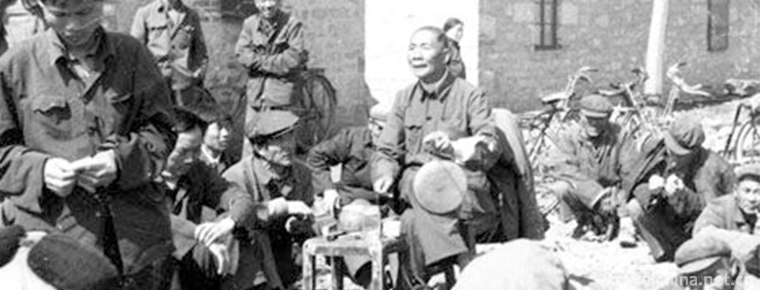
-
Ordos Cultural Tourism Village
Ordos Cultural Tourism Village is located in the front banner of Etok, Ordos City. It is located in the western Ordos grassland at the junction of Mengning and Ningxia. It is located in the beautiful .
Views: 403 Time 2019-01-08 -
suyukou national forest park
Suyukou National Forest Park is located in Helan Mountain National Nature Reserve, 50 kilometers northwest of Yinchuan City, capital of Ningxia. It is a national 4A-level tourist attraction..
Views: 161 Time 2019-02-13 -
Babu Zhai soup
Babaozhai soup is a traditional dish of Guangdong Province, which belongs to Cantonese cuisine. The soup tastes elegant and light, fresh and tasty, nutritious and has strong nourishing function..
Views: 281 Time 2019-03-27 -
Dagudarengrab
Dagudalenglei Biao is the only Creation Epic discovered, sorted out and published by the De'ang people up to now. It is more than 1200 lines long. The epic is different from.
Views: 392 Time 2019-04-22 -
Song and dance duet
Errentai is commonly known as Dual Items, two classes. Originated in Shanxi and growing up in Inner Mongolia, it is a traditional opera popular in the central and Western Inner Mongolia Autonomous Reg.
Views: 129 Time 2019-04-29 -
Batik art
Miao batik technology, the traditional handicraft of Danzhai County, Guizhou Province, is one of the national intangible cultural heritage..
Views: 112 Time 2019-05-10 -
Puning Ying Song
Puning Yingge is a traditional folk dance style widely spread in Puning City, Guangdong Province. It was created and compiled by Yitang people during the reign of Qianlong in the Qing Dynasty. It has .
Views: 120 Time 2019-06-09 -
Shui Shui Custom
"Shuishu" is a prototype written by the ancestors of the Shui nationality of the minority nationalities in Southwest China. Shui Shu custom is the formation, development and inheritance of S.
Views: 188 Time 2019-06-15 -
Sun Tzu
Sun Wu (about 545 BC - about 470 BC), long Qing, late spring and autumn. Qi State Le An (today) Shandong ProvincePeople in the North 。 China's famous military strategist and statesman in the spring an.
Views: 192 Time 2019-09-04 -
Thousand Buddha Cliffside Sculptures
Qianfo cliff, located 4 kilometers north of Guangyuan City, on the East Bank of Jialing River and on the ancient Shu Road of Jinniu, has a long history and exquisite carving skills. The grottoes began in the late Northern Wei Dynasty, flourished in the Tang Dynasty and ended in the Qing Dynasty. After thousands of years.
Views: 341 Time 2020-11-08 -
Ding Zhen first salary to buy washing machine and battery car
Ding Zhen's first salary to buy a washing machine battery car, do not want her mother's hands frozen.
Views: 109 Time 2020-12-06

